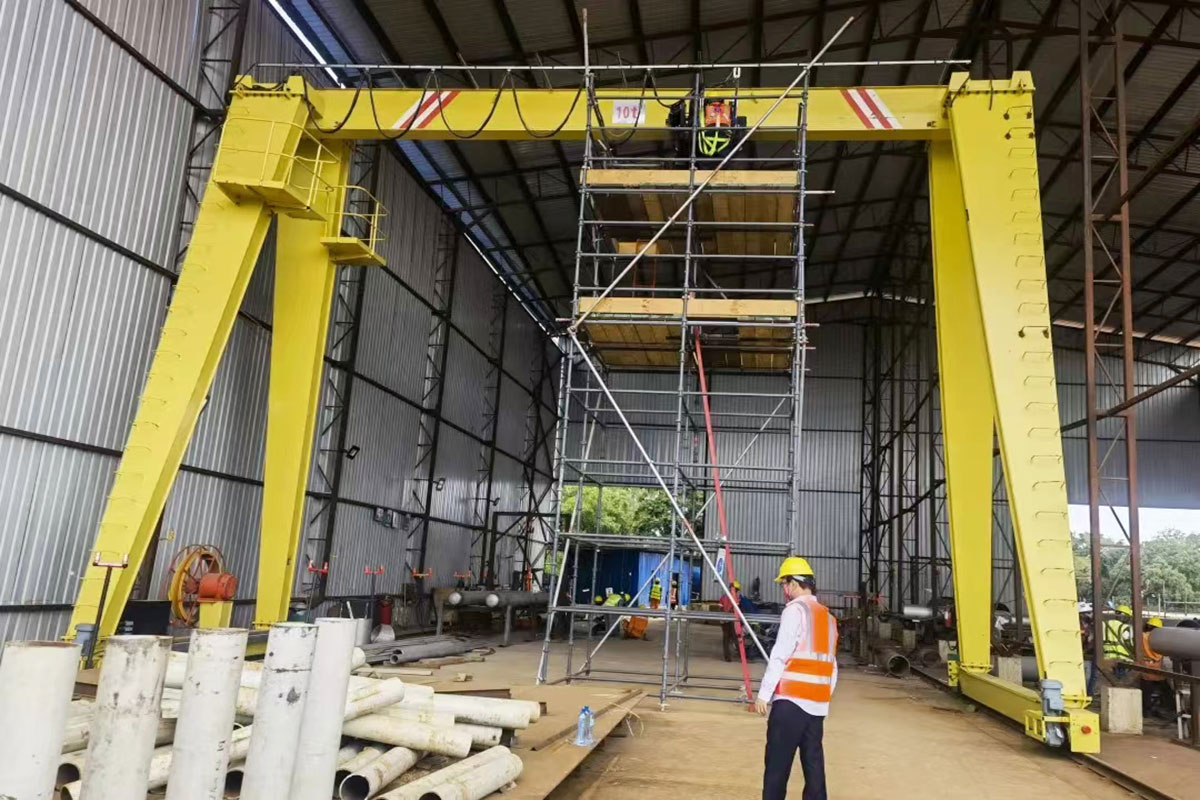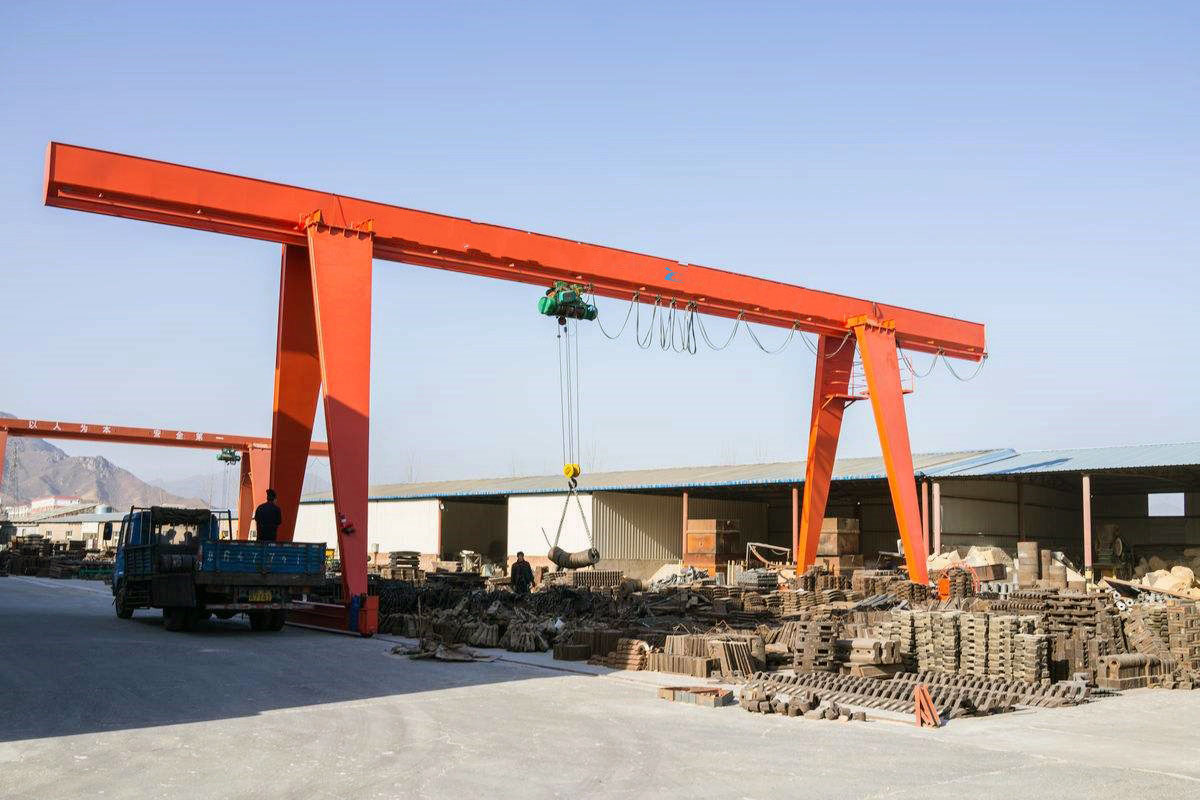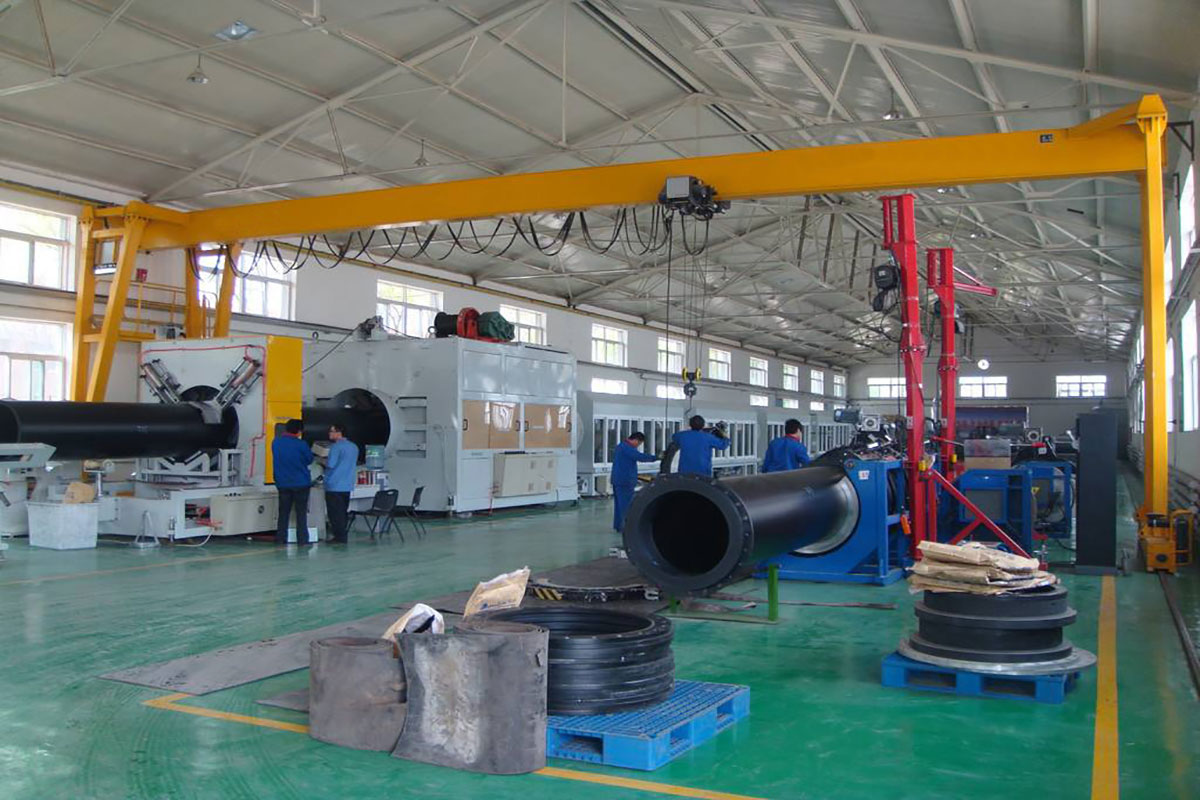A single girder gantry crane is a type of crane that consists of a single bridge girder supported by two A-frame legs on either side. It is commonly used for lifting and moving heavy loads in outdoor environments, such as shipping yards, construction sites, warehouses, and manufacturing facilities.
Here are some key features and characteristics of single girder gantry cranes:
Bridge Girder: The bridge girder is the horizontal beam that spans the gap between the two legs of the gantry crane. It supports the lifting mechanism and carries the load during operation. Single girder gantry cranes have a single bridge girder, which makes them lighter and more cost-effective compared to double girder gantry cranes.
Legs and Supports: The A-frame legs provide stability and support to the crane structure. These legs are typically made of steel and are connected to the ground through footings or wheels for mobility. The height and width of the legs can vary depending on the specific requirements of the application.
Lifting Mechanism: Single girder gantry cranes are equipped with a lifting mechanism, such as an electric hoist or a trolley, which moves along the length of the girder. The lifting mechanism is used to raise, lower, and transport loads vertically. The lifting capacity of the crane depends on the specifications of the hoist or trolley used.
Span and Height: The span of a single girder gantry crane refers to the distance between the centers of the two legs. The height of the crane is determined by the required lifting height and clearance needed for the load. These dimensions can be customized based on the specific application and space constraints.
Mobility: Single girder gantry cranes can be designed with either fixed or mobile configurations. Fixed gantry cranes are permanently installed in a specific location, while mobile gantry cranes are equipped with wheels or tracks, allowing them to be moved within a defined area.
Control System: Single girder gantry cranes are operated by a control system that includes push-button pendant controls or a remote control. These systems enable operators to control the crane’s movements, including lifting, lowering, and traversing the load.
Single girder gantry cranes are known for their versatility, ease of installation, and cost-effectiveness. They are suitable for various applications where medium to heavy loads need to be lifted and transported horizontally. However, it is important to consider factors such as load capacity, duty cycle, and environmental conditions when selecting and operating a single girder gantry crane to ensure safe and efficient operation.
In addition, the control systems used in single girder gantry cranes play a crucial role in ensuring the safe and efficient operation of the crane. Here are some key aspects of these control systems:
- Pendant Controls: Pendant controls are a common control option for single girder gantry cranes. They consist of a handheld pendant station connected to the crane by a cable. The pendant station typically includes buttons or switches that allow the operator to control various crane movements, such as lifting, lowering, trolley traverse, and bridge travel. Pendant controls provide a simple and intuitive interface for the operator to control the crane’s movements.
- Radio Remote Controls: Radio remote controls are becoming increasingly popular in modern crane control systems. They offer the advantage of allowing the operator to control the crane’s movements from a safe distance, providing better visibility and flexibility. Radio remote controls consist of a handheld transmitter that sends signals wirelessly to the crane’s receiver unit. The transmitter is equipped with buttons or joysticks that replicate the functions available on pendant controls.
- Cabin Controls: In certain applications, single girder gantry cranes may be equipped with an operator cabin. The cabin provides an enclosed operating environment for the crane operator, protecting them from external elements and offering better visibility. The control system in the cabin typically includes a control panel with buttons, switches, and joysticks to operate the crane’s movements.
- Variable Frequency Drives (VFD): Variable frequency drives are often used in the control systems of single girder gantry cranes. VFDs allow for smooth and precise control of the crane’s motor speeds, enabling gradual acceleration and deceleration. This feature enhances the safety and efficiency of the crane’s movements, reducing wear and tear on the components and improving load control.
- Safety Features: Control systems for single girder gantry cranes incorporate various safety features. These can include emergency stop buttons, overload protection systems, limit switches to prevent overtravel, and anti-collision systems to avoid collisions with obstacles or other cranes. These safety features are designed to protect both the crane operator and the surrounding environment.
- Automation and Programmability: Advanced control systems for single girder gantry cranes may offer automation capabilities and programmability. This allows for the creation of pre-set lifting sequences, precise load positioning, and integration with other systems or processes.
It’s important to note that the specific control system used in a single girder gantry crane can vary depending on the manufacturer, model, and customization options. The control system should be selected based on the operational requirements, safety considerations, and the preferences of the crane operator.










